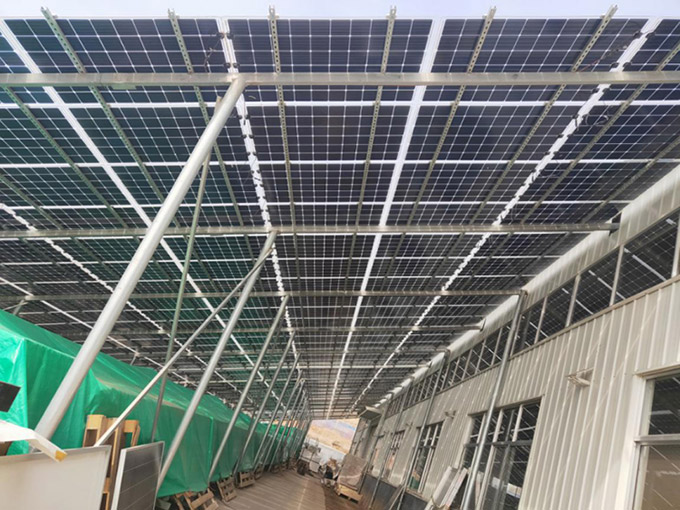Top 10 Solar Project Solution Factory In China
Most of today's solar panels collect solar irradiance from only the front side of the panel, which faces the sun. A new generation of bifacial solar panels capable of capturing light reflected off the ground onto the back side of the panel may be a game changer.
Unlike photovoltaic (PV) systems that use traditional monofacial modules, bifacial modules allow light to enter from both the front and back sides of a solar panel. By converting both direct and reflected light into electricity, bifacial PV systems can generate as much as 30% more energy than a comparable monofacial system, depending on how and where the system is installed.

While bifacial module technology has existed since the Russian space program deployed it in the 1970s, it has not been commercially embraced due to the expense of producing it. A drop in manufacturing costs, however, is now leading the solar industry to give bifacial solar panels — and the rules for PV energy system design — a second look.
ECHNOLOGY OVERVIEW
Bifacial modules can be manufactured using either monocrystalline or polycrystalline wafers. Each solar cell in a monocrystalline bifacial panel is composed of a single silicon crystal. By giving the electrons that generate electricity flow more room to move, these panels are more efficient than polycrystalline bifacial solar panels, which are composed of silicon fragments that have been melted together. Production costs on polycrystalline panels, however, are typically lower than
their monocrystalline counterparts.
Like all solar panels, bifacial modules receive a power rating — typically 250 to 400 watts — that represents their expected power under ideal sunlight and temperature conditions. Because this power rating considers only the front side of a solar panel, bifacial modules are also assigned a second rating for the electrical output of the module's rear side. Known as bifaciality, this ratio compares the power produced by the module's rear side to the power produced by the front, as measured during standard test conditions (STC):
B=Pmpp,rear/Pmpp,front
The King of the Democratic Republic of the Congo has provided a solar energy storage power station system for the village of Bunkeya to meet the electricity needs of 2500 small households in the village. As the village currently lacks access to the grid, the King requested the design of a 1MW solar panel system paired with a 1.8MWh lithium battery storage system to power the entire village.
